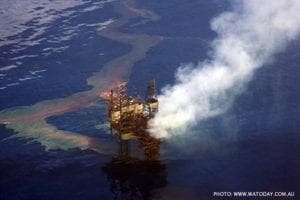Oil Spill Effects Cetaceans of the Gulf
 The Gulf of Mexico oil leak continues to spill out over 4 million litres (higher end estimate) of oil each day and is one of the worst that has occurred on Earth. It began over 70 days ago and now stretches along 190km of coastline. The spill threatens the very core of the natural ecosystems in the area and along with it, the species that call it home.
The Gulf of Mexico oil leak continues to spill out over 4 million litres (higher end estimate) of oil each day and is one of the worst that has occurred on Earth. It began over 70 days ago and now stretches along 190km of coastline. The spill threatens the very core of the natural ecosystems in the area and along with it, the species that call it home.
The Gulf of Mexico is home to over 19 species of cetaceans including; bottlenose dolphin, beaked whales, sperm whales and the highly endangered north Atlantic right whale. Oil spills can have both direct and indirect effects on cetaceans, from breathing in the highly toxic vapour of the oil to loss of prey stocks.
The fumes that arise from an oil spill can be so powerful that they can make fully grown whales unconscious, which causes them to drown. Oil spills can also taint the prey species causing detriment to their diets and making their chances of raising healthy calves extremely low.
The recent oil spill in the Gulf of Mexico has had dire implications for the entire ecology of the region. Up to 1,400 to 1,600 sperm whales live year-round in the Gulf and are considered extremely vulnerable due to their relatively small population size. All sperm whales are already endangered in the U.S. and the loss of a handful of whales each year would ultimately affect population numbers.
The Gulf of Mexico oil spill surpasses the devastating 1991 Alaskan Exxon Valdez which caused a 40% decrease in the resident killer whale population. Over 20 years later, the animals and the ecosystem affected by the Exxon Valdez spill has not yet recovered.
The major impacts of the continuing Gulf of Mexico spill are yet to be determined, but the impacts from the region will last for decades.
To look at the oil spill from the air and witness the extent of the spill follow the link: http://www.youtube.com/v/pxDf-KkMCKQ&hl=es_ES&fs=1&
